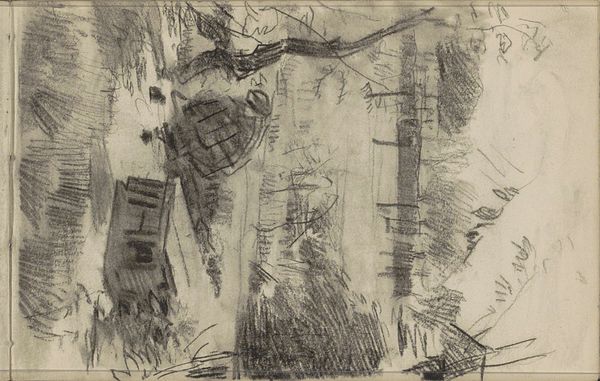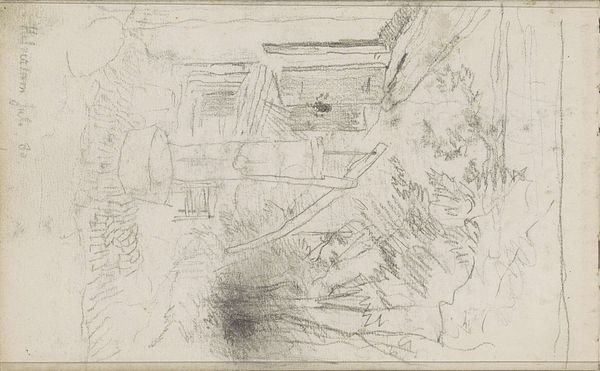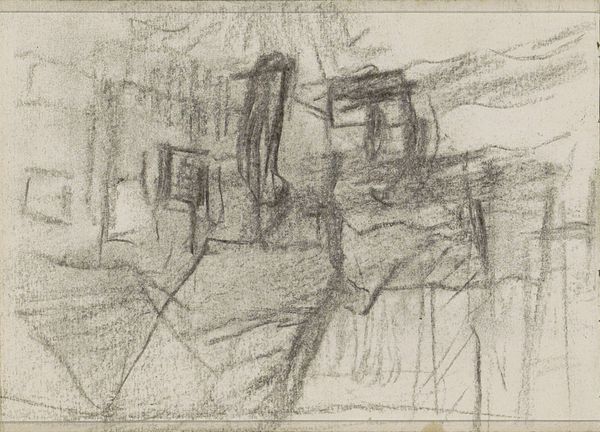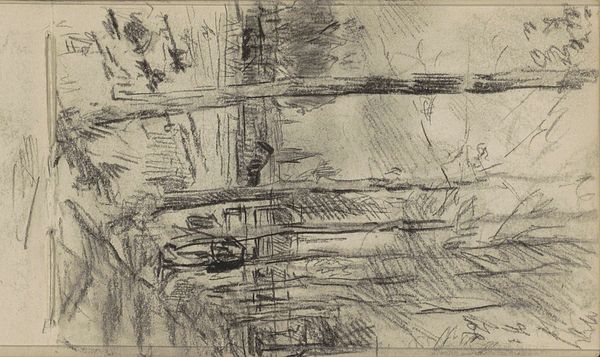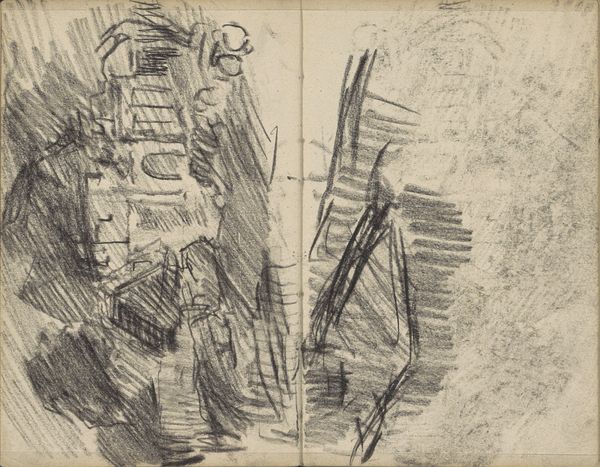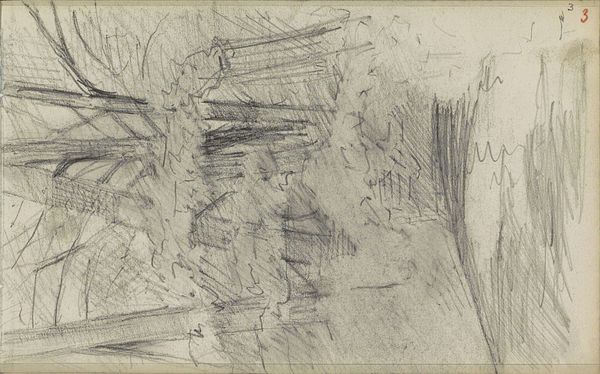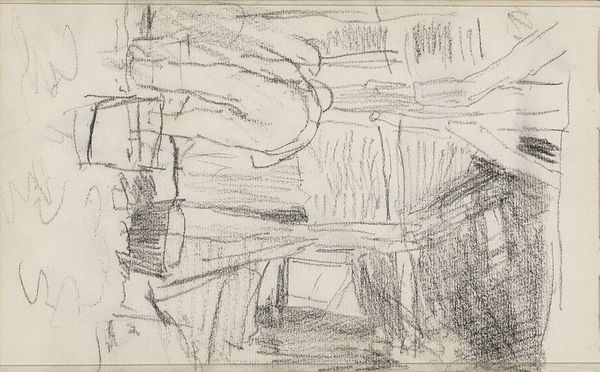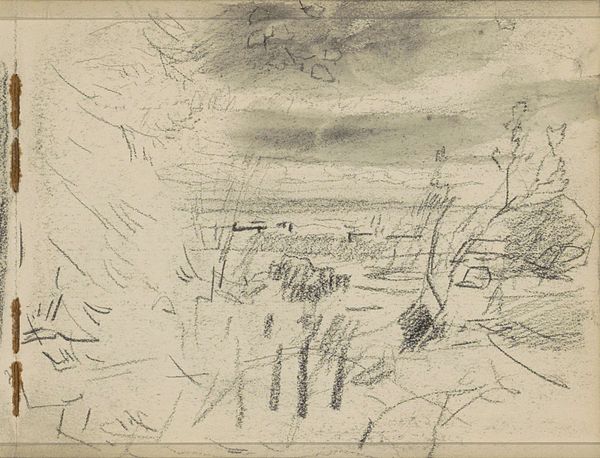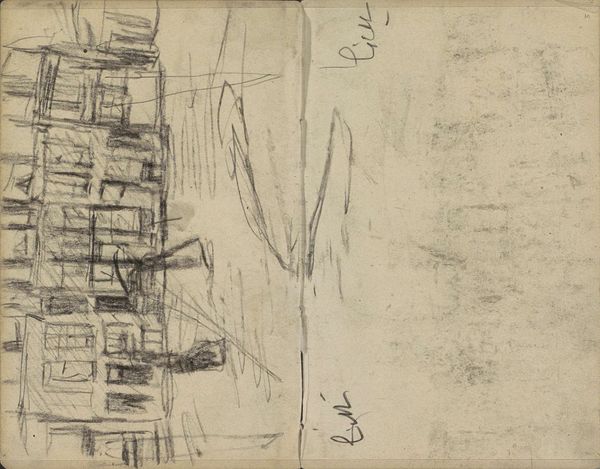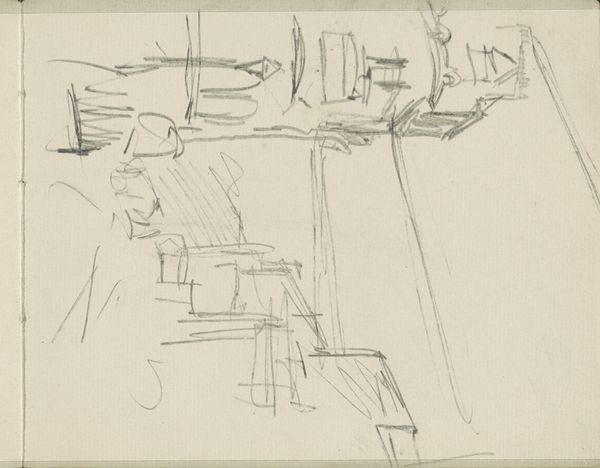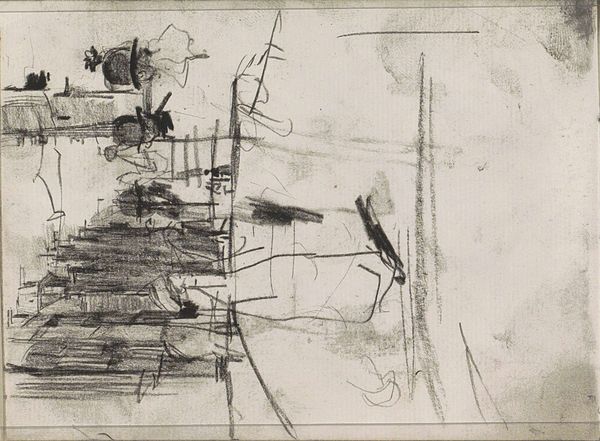
Copyright: Rijks Museum: Open Domain
Curator: Anton Mauve's "Riders and a Horse-Drawn Cart by a Tower on a Hill," likely created between 1848 and 1888, presents a compelling view into 19th-century rural life, here on view at the Rijksmuseum. Editor: My initial reaction is one of transience. The sketch-like quality lends it a feeling of fleeting observation, like a memory fading at the edges. Curator: Exactly. Mauve’s work, fitting into both the Realist and Romantic traditions, captures that delicate balance. On one hand, he's observing the everyday lives of rural workers, but there’s an undeniable idealization present as well. This image becomes, for the viewer, a glimpse of pastoral charm rather than an exercise in political portraiture. Editor: What strikes me is the dominance of the media, primarily graphite and charcoal. Look at how he uses these materials to create texture – the rough strokes suggest not just form, but the very feel of the landscape and the weight of labor. Notice the softness used on the left side, juxtaposed with the dark line weights used to highlight figures moving to the right. It highlights the process. Curator: His work became very popular with a wide variety of middle class collectors during this time period, who likely longed for the charm they could not encounter in a bustling industrial cityscape. It spoke to this tension in a powerful way. Editor: Do you think his work being reproduced as etchings had anything to do with it? How were printmaking technologies altering accessibility, influencing a market's desire for images they can have in their own homes? This may have influenced his choice of limited materials, because it more easily mimics intaglio based prints. Curator: That's a fantastic point! It certainly underscores the increasing commodification of art during that period. But ultimately this sketch serves as a reminder of the artistic mediation between nature, labor, and cultural consumption. Editor: Ultimately, it reminds us of the potent interplay between materials, markets, and memory itself. It makes me wonder what sketches of our modern landscapes will mean to future generations.
Comments
No comments
Be the first to comment and join the conversation on the ultimate creative platform.

